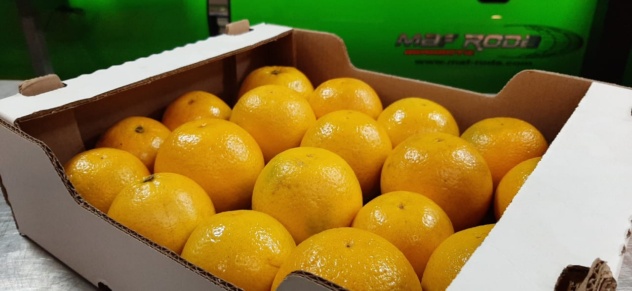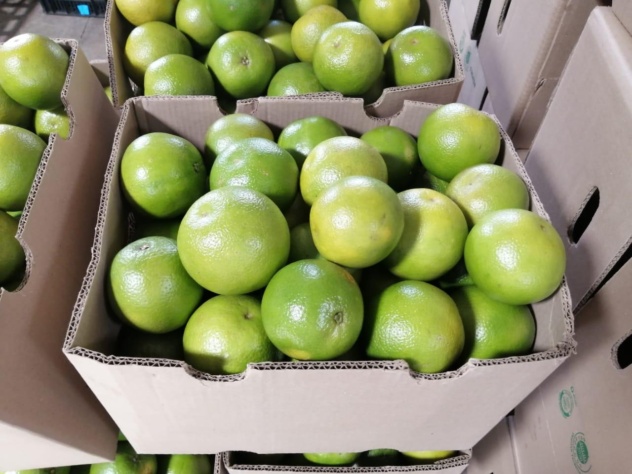ORANGE VALENCIA

Orange is the fruit of the sweet orange tree, a tree that belongs to the genus Citrus of the Rutaceae family. This family comprises more than 1,600 species. The botanical genus Citrus is the most important of the family, and consists of about 20 species with edible fruits all very abundant in vitamin C, flavonoids and essential oils. The fruits, called Hesperides, have the peculiarity that their pulp is formed by numerous vesicles full of juice.
Orange is a round fruit, orange color, consumed mostly in winter. The pulp of its interior is also orange and is formed by small sachets full of juice. Together, with the banana and the apple, is one of the most consumed fruits in the world. There are a large number of varieties that differ in shape, size, pulp´s color: orange or red; flavor, because there are sweet or more acidic oranges, by the time of maturation, and by the existence or not seeds.
Oranges grow on small-sized and evergreen trees. It is a tree very sensitive to the low temperatures, it requires much light and water for the maturation of the fruits. Its flowers are white and very aromatic.
Because of their pleasant taste and refreshing properties, oranges are one of the main fruits of the table, and are very popular and consumed by the whole population.
In case of iron deficiency anemia, it is very useful and advisable to consume this fruit by accompanying foods rich in iron or supplements of this mineral. Vitamin C significantly increases iron absorption and this speeds recovery.
Some of the benefits to the human organism from the usual consumption of orange are:
-
Orange provides a significant amount of soluble fiber that retains water, so consumption of orange (better whole or in juice with pulp) favors intestinal transit.
-
It helps to decrease the absorption of fat and cholesterol, to the good control of the glycemia (blood sugar levels).
-
It has a satiating effect, making fruit suitable for people with hypercholesterolemia, diabetes and overweight. Because of its potassium, vitamin C, carotenoids and other nutrients, it is a good alternative to replenish the minerals and fluid lost after physical activity and to minimize the risk of injury and boost the defenses.
-
Its juice mixed with water, baking soda and sugars can perfectly make rehydration drink functions during competition in sports that last longer than 90 minutes.
-
High content of water, potassium and citric acid (alkaline urine), turn oranges into fruits with a diuretic effect, beneficial in case of hyperuricemia or gout and renal lithiasis (it favors the elimination of uric acid and its salts), hypertension arterial or other diseases associated with fluid retention.
AVAILABILITY
| HIGH | JANUARY, FEBRUARY, MARCH, MAY, JUNIO, JULY, AUGUST, SEPTEMBER, OCTOBER AND DECEMBER |
| MEDIUM | APRIL Y NOVEMBER |
| LOW |
NUTRITIONAL CONTENT
| CONTENT PER 100 GRS OF PULP | UNITS |
| Water | 86% |
| Protein | 0,94 gr |
| Carbohydrates | 11,75 mgr |
| Fiber | 2,4 gr |
| Fat | 0,12 gr |
| Betacarotene | 71 Ug |
| Folic acid | 30 Ug |
| Potasium | 181 mgr |
| Vitamin B | 0,06 mgr |
| Vitamin C | 53,2 mgr |
| Vitamin E | 0,18 mgr |
| Iron | 0,10 mgr |
| Magnesium | 10 mgr |
| Vitamin A | 11 mgr |
| Manganese | 0,025 mgr |
| Calcium | 40 mgr |
| Phosphorus | 14 mgr |
| Niacine | 0,282 mgr |
| Zinc | 0,7 mgr |

